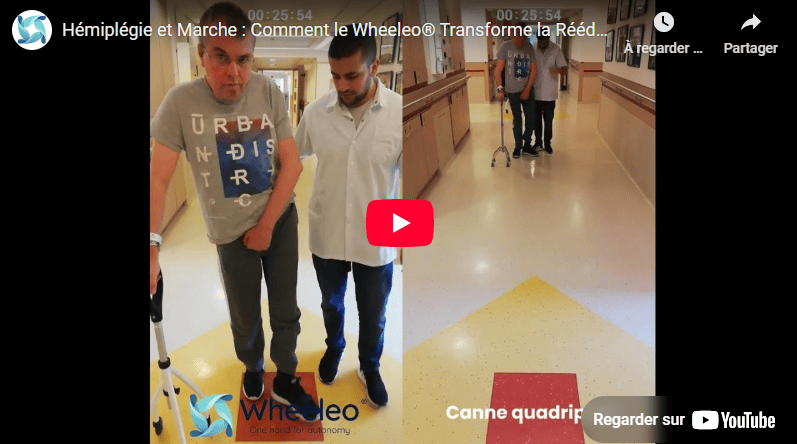
This patient presents with left hemiplegia following a stroke, with several associated disorders: hemi-neglect, executive function disorders, sensory disorders, and dysarthria. Despite several months of rehabilitation, these impairments remain present and have a significant impact on his walking ability.
The use of a quad cane does not allow him to regain functional walking. It even generates new difficulties:
The introduction of the Wheeleo®, a one-handed walker, immediately modifies several parameters of his locomotion:
For patients with complex neurological impairment, the Wheeleo® doesn’t just support walking: it acts as a motor organization facilitator. It doesn’t correct associated disorders, but it compensates for some of their side effects, which globally improves the quality of gait and care.
Please fill in this short form so that we can contact you to arrange a test.